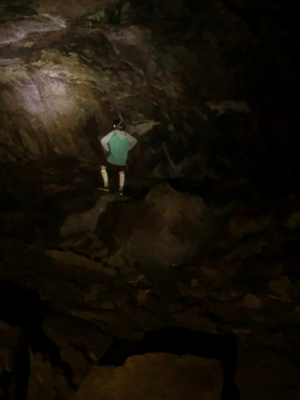
Every week it seems as if the grocery store has a deal on cheap pork, or ground beef. Even chicken too.
You can see these deals promoted on the front of every page of each store ad – stores are in the understanding that those prices will motivate you to make their store the store to shop at for that particular week.
Or they are hoping that by getting you IN the store they can convince you that you need more than what you really might think you do… and they will win in the aspect that they will get more of your money than you intended to spend.

Many people look for these cheap meat deals every week – but a good majority of people are unaware of the cost OF that cheap meat.
When I see cheap meat, the first thing that comes to mind is the manner in which the animals were raised – but perhaps not everyone thinks along the same lines. Here are THREE reasons to be concerned about picking up that cheap meat you see in store – don’t be so eager to jump on that bandwagon.
#1 – Confined Animal Feeding Operations (CAFO’s)
MOST meat in the United States is raised in confined animal feeding operations (CAFO’s) – it’s a confined operation, that is controlled by climate, and is the cheapest way to raise meat for profit. Food production allows CAFO’s to produce MORE for less, through low profit-margin production, processing and distribution. Our government subsidizes these operations, which often involve large feedlots of animals crammed into smaller spaces.
(Have you ever driven by one? I have – when you drive from Arizona up North, depending in your route, you will often times go past several – Pig and Cow farms. They are HUGE. They are quite a far fetch from those pictures of cows grazing on green pastures.. and in many cases they just might make such an impact on you that you start doing your OWN research.)
Here in the U.S., some ranchers opt to raise grass fed meat through a more traditional route – and as such, they pay more due to the higher operational costs. Therefore their product will cost more in the form of a higher premium.
Though when you go to Costco and pick up Grass Fed Organic Beef, you’ll find that it is actually imported from Australia and New Zealand…. 85% of the grass fed beef in the U.S. is imported – largely because those countries have the ability to use more plentiful grasslands, and a grazing climate available year round.
Since they have more plentiful grasslands and year-round grazing weather that is perfect for their cattle, they import that Grass Fed Beef to the U.S. and in most cases it is sold cheaper than grass-fed beef here from American Ranchers.
#2 – Effects of Slaughtering
Slaughtering ultimately affects the safety of the food – meat quality is largely affected if slaughtering is not done properly.
Animals that are not properly handled or who are living in CAFO’s tend to have higher stress, injuries and frequent disease versus grass fed beef. Improperly handled animals like these tend to produce lower quality meat. Being on a pasture of green grass is far more enjoyable (don’t you think?) than being stuffed into a huge operation without room to move.
Energy required for muscle activity in a live animal comes from glycogen in the muscle. For animals that are less stressed, healthy and well rested, glycogen is high.
When slaughtered, the glycogen in the muscle converts to lactic acid. The carcass then becomes firm.
Lactic Acid is needed in the production of meat – it helps keep the meat a good quality, color, tasteful and tender. For those animals that are stressed due to living conditions or, from improper slaughtering, the glycogen level is lower. The lactic acid during slaughter/after is reduced, and as a result the meat suffers in terms of quality.
#3 – Antibiotics in Meat
When you have a huge Confined Animal Feeding Operation (CAFO) it’s impossible to mass produce meat as safety as we’d like – as a result, animals are fed antibiotics, growth promoting drugs, and hormones to help prevent the spread of disease and keep the animals stress down.
Antibiotics administered to livestock create antibiotic resistant superbugs that are a threat to your health. Eat those cheaper meat items and you risk having antibiotic resistant bacteria.
Here are the Labels you might see the MOST often in your grocery store.
100% USDA Organic: Antibiotics haven’t been used at any stage of the production of the meat. The animals’ organic feed cannot contain animal by-products, antibiotics or genetically engineered grains and cannot be grown using persistent pesticides or chemical fertilizers.
Grass Fed: Combined with 100% USDA Organic Label means that no antibiotics have been used. But if the Grass Fed Label has been appears alone, then antibiotics may have been used.
Antibiotic Free, No Antibiotic Residues or No Antibiotic Growth Promotants: Not approved by the FDA. Misleading.
Natural or All Natural: NO Meaning. Natural or All Natural can receive antibiotics, genetically engineered grains and can be raised in CAFO’s.
Recent Changes
Since 2013, American consumers have seen labels on their meat telling them where the animal was born, raised and slaughtered. This past December (2015) … Congress repealed that law (COOL – Country of Origin Labeling).
The reason for eliminating was due to cost, essentially. The repeal of the labeling of meat applies to Pork and Beef.
Worrisome? For some of us it is. Which is why some of us would rather support a local farmer – we have the opportunity to now where our meat is coming from, how it’s raised, what it’s fed, and how it’s slaughtered.

Ever considered buying your meat from a Farmer? If not, it’s a great option – you can read more about How to Buy Grass Fed Beef from a Local Farmer HERE.



